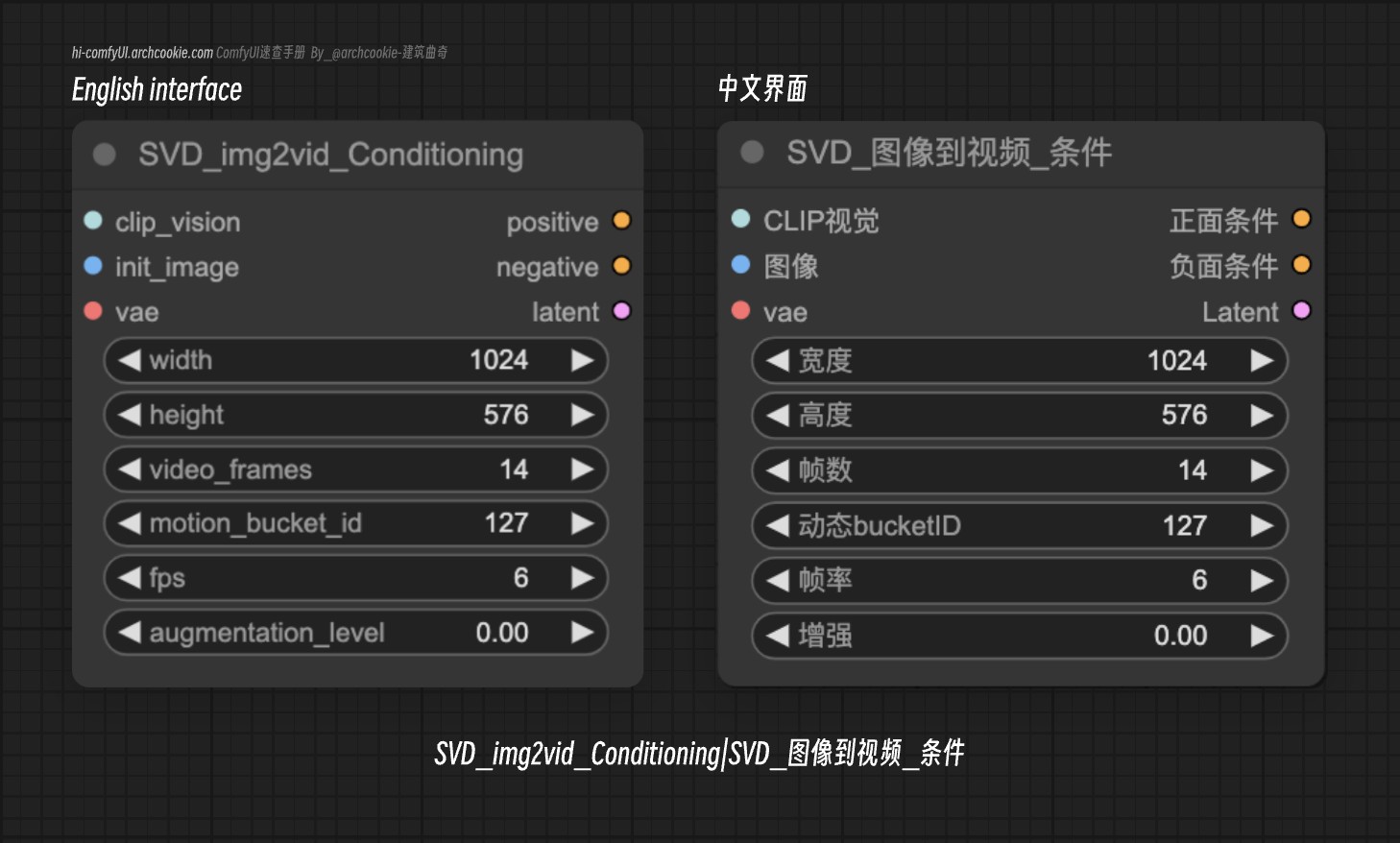SVD img2vid Conditioning

Documentation
- Class name:
SVD_img2vid_Conditioning - Category:
conditioning/video_models - Output node:
False
This node is designed for generating conditioning data for video generation tasks, specifically tailored for use with SVD_img2vid models. It takes various inputs including initial images, video parameters, and a VAE model to produce conditioning data that can be used to guide the generation of video frames.
Input types
| Parameter | Comfy dtype | Description |
|---|---|---|
clip_vision | CLIP_VISION | Represents the CLIP vision model used for encoding visual features from the initial image, playing a crucial role in understanding the content and context of the image for video generation. |
init_image | IMAGE | The initial image from which the video will be generated, serving as the starting point for the video generation process. |
vae | VAE | A Variational Autoencoder (VAE) model used for encoding the initial image into a latent space, facilitating the generation of coherent and continuous video frames. |
width | INT | The desired width of the video frames to be generated, allowing for customization of the video’s resolution. |
height | INT | The desired height of the video frames, enabling control over the video’s aspect ratio and resolution. |
video_frames | INT | Specifies the number of frames to be generated for the video, determining the video’s length. |
motion_bucket_id | INT | An identifier for categorizing the type of motion to be applied in the video generation, aiding in the creation of dynamic and engaging videos. |
fps | INT | The frames per second (fps) rate for the video, influencing the smoothness and realism of the generated video. |
augmentation_level | FLOAT | A parameter controlling the level of augmentation applied to the initial image, affecting the diversity and variability of the generated video frames. |
Output types
| Parameter | Comfy dtype | Description |
|---|---|---|
positive | CONDITIONING | The positive conditioning data, consisting of encoded features and parameters for guiding the video generation process in a desired direction. |
negative | CONDITIONING | The negative conditioning data, providing a contrast to the positive conditioning, which can be used to avoid certain patterns or features in the generated video. |
latent | LATENT | Latent representations generated for each frame of the video, serving as a foundational component for the video generation process. |